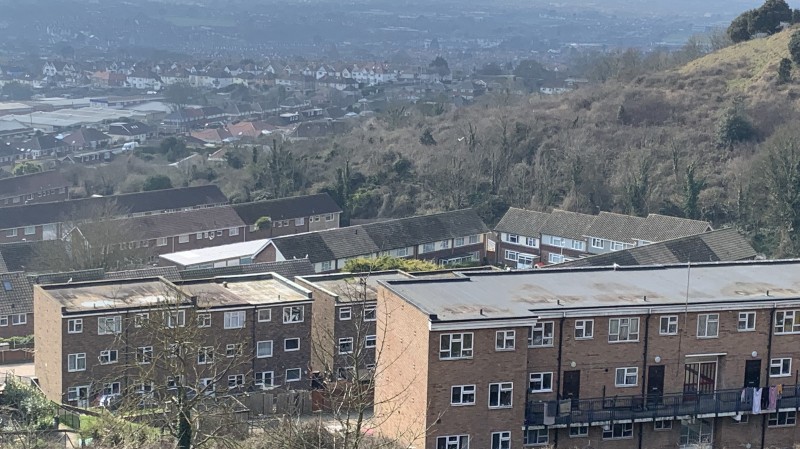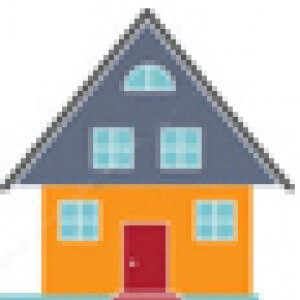You are here: Types of Flat Roof
When renewing or installing a flat roof, there are a multitude of materials and finishes to choose from. What you choose will largely depend on the roof’s location and use. Practical considerations are always important when considering the use of roofing felt versus more modern materials such as rubber or GRP composite, but it is also worth thinking about the aesthetic value a green roof can add to your property, or the useable space a flat roof deck can provide. The following outlines each type of flat roof, approximate cost per metre square and the associated pros and cons

Felt
By far the most common flat roofing material, the cost of finishing a flat roof in felt starts at around £2/m2 and is similarly cost effective to repair small sections with felt patches. Self-adhesive felt is slightly more expensive at around £2-3/m2, and torch-on varieties will set you back approximately £5/m2.
Roofing Megastore highlights the fact that felt roofs can be installed comparatively quickly and is well within the skillset of those comfortable with DIY; self-adhesive felts, torched-on or nailed-/screwed-on felts all require a matter of hours to install, and the material itself comes in convenient rolls to work with. Roofing Megastore also cites felt as the most lightweight roofing material, making it ideal for timber-framed outbuildings or garages.
You can expect a felt roof to have a lifespan of 10-20 years, even longer if regular (at a minimum bi-annual) maintenance is carried out and any blisters or splits are repaired quickly. Adverse weather can take its toll, however, and it is advisable to inspect the roof after such weather and act quickly on any repairs needed. That being said, felt roofs are relatively easy to repair via patching small sections, not requiring the involvement of a roofing specialist.
Despite the cost-effectiveness of their installation and repair, felt roofs have a bad reputation for failure which can put many homeowners off using this material. Many are also put off by the regular maintenance required. Unlike ‘seamless’ roofing materials such as GRP fibreglass and EPDM rubber proofing, there will be ‘joins’ between different felt panels, which in turn will be especially prone to splits and leaks. If your roof is south facing or near trees or large bushes that will cause damage with branches and leaves, then you will likely need to take greater care in terms of maintenance and dealing with small repairs as they occur. However, as long as you are not put off by the need to be disciplined about inspecting and maintaining the roof, there is little cause for concern.
GRP Fibreglass
Glass Reinforced Plastic (GRP) is a ‘seamless’ roofing material with a lifespan of 20-30 years, according to Roofing Megastore. It is highly durable and so is unlikely to be damaged by branches, snowfall or intense heat in south facing properties. Costing around £15/m2 , it is however expensive in comparison to felt or EPDM rubber proofing. One benefit of GRP roofing is that it can be installed by two or more confident DIY-ers; GRP roofing kits cost between £85-£360, depending on the size of the project. The process involves applying resins, topcoats laminates, which can be fiddly and time-consuming, so anyone not confident or working solo should hire a roofing specialist.
Due to its durability, a properly installed GRP roof will continue to look good over an extended period of time and shouldn’t require much in the way of repair; the main downside to this material is the cost.
EPDM
Ethylene propylene diene monomer (EPDM) is single layer rubber membrane. As a roofing material, it is more cost effective than GRP fibreglass, costing around £9/m2 according to Roofing Megastore, but has similar advantages to GRP. However, unlike felt, it has a lifespan of up to 50 years and requires little maintenance.
Similar to GRP, EPDM rubber has a ‘seamless’ finish which is both smart in appearance and less vulnerable to leaks or splits. Installation is well within the remit of a homeowner confident with DIY: kits range in price from £280 to upwards of £350, depending on the size of the project.
EPDM rubber proofing is considered one of the most durable roofing materials alongside GRP fibreglass. The rubber is waterproof and has a high tensile strength, making it highly flexible; this in turn means it can withstand heavy rainfall, freezing temperatures and extreme heat.
Built Up Roofs
According to Roofing Megastore, Built Up roofs are one of the hardiest types available. They are composed of alternating layers of a reinforcing fabric and bitumen, finished with a final top layer of gravel. Costing a BUR is difficult given the quantities of different materials needed, and the fact that professional installation is generally advised for all but the most experienced DIY-homeowner. The bitumen layers are either applied ‘hot’ or ‘cold’, with the former emitting toxic fumes during installation. Due to the layering involved, installing a BUR can be a protracted process.
On the plus side, BUR has a respectable lifespan of 20 to 30 years. The gravel coating means it easily withstands extreme heat, so it perfect for south facing properties. However, the gravel coating also makes an ideal space for moss and lichen to grow, and these can lead to splits and leaks in the roof if it is not properly maintained and cleared. The gravel can also be susceptible to very high winds; although this is easily repaired, it is an additional maintenance cost to consider.
Green Roofs
In an increasingly eco-conscious world, Green Roofs are a fantastic option in both urban and rural settings. According to the Royal Horticultural Society (RHS), green roofs help owners reduce their energy usage with an insulating layer of vegetation, improve the surrounding air quality and absorb rainwater which can avoid problems with water run-off during heavy rainfall.
Undeniably eye-catching, RHS also highlight the fact the green roofs can be tailored to your choice of plant life and provide a valuable habitat for insects. In suburban and urban areas, green roofs improve air quality and reduce the air temperature too, whilst also providing a buffer to noise pollution in these areas. Lastly, these roofs can prevent fires spreading between buildings in built up areas according to RHS.
With a lifespan of approximate 40-50 years, it seems the list of advantages to this type of roof is endless.
However, this long list of advantages comes at a cost: approximately £90/m2 according to Roofing Megastore. Green roofs are made from specialised waterproof trays (usually made of EPDM, see above), and of course a variety of vegetation. Green roofs can be intensive, essentially a rooftop garden with small trees, climbers, perennials and shrubs, or extensive, for example a carpet of low-maintenance creepers. The cost will largely depend on the type of vegetation you wish to include, as this determines the infrastructure (soil depth and materials) needed. Some plants will be susceptible to hard frosts and extreme heat, so many green roofing specialists advise only the hardiest plants are used.
It is vital that a green roof is designed to hold the weight of vegetation and that proper drainage systems are in place to channel excess water safely into guttering. On top of the cost of materials for your green roof, factor in the costs of design and structural inspections or surveys. RHS advise using green roofing specialists to design and install a green roof, as well as an architect and/or structural engineer to ensure the flat roof can withstand the weight that will bear down on the structure. It is also important to consider how easy it will be to maintain the green roof-garden once it is installed: consider the ease of access and include low- or high-maintenance vegetation accordingly.
Although hardy plants can withstand extreme weather, green roofs will undoubtedly face strong winds; to avoid damage, RHS also advise homeowners to install mesh screens to minimise the impact from wind.
Flat Roof Decking
If your flat roof is accessible from one or more rooms in your house, a flat roof deck may be good option. This is particularly true if you need more usable space during Spring and Summer months. Most flat roof decks are now made of aluminium, being light weight strong and robust over a lifespan of 50 years plus. As long as the building structure below can withstand dynamic foot traffic, flat roof decks can be a striking addition to a property.
Roofing megastore advise flat roof decks start at around £20/m2: of course, this is quite expensive in comparison to EPDM or GRP, however any value added to your home should be considered before balking at the outlay involved! Flat roof decks are a unique addition to a home; speak to a few local estate agents to ensure the cost of installation wouldn’t outweigh the value added.
Summary
There are many types of flat roof to consider, from the most basic felt finish to green roofs and roof decking. Each type of roof has its own advantages and disadvantages, and it is important to consider these carefully in line with the amount of wear and tear your roof is likely to take (for example, if it is south facing or next to a large tree or trees).
If you are looking to make some home improvements, you may find some of these services useful
Building Regulations
Find details of local experts who can help with Building Regulations
Builders
Find local help with a building project
Architectural Design Services
Find local Architectural Design experts
Structural Inspections
Find an expert to carry out a structural inspection
Building Surveys
I want a local surveyor to do a Building Survey for me
Choose which Architectural service you require
If you are not sure which service you require, check out the options available...


